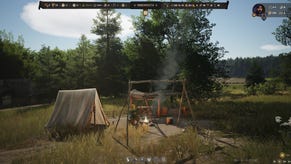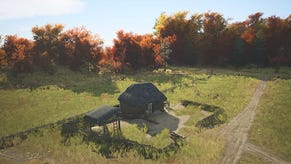Pokemon Quest Move Stone Guide - Every Power Stone and Move Stone in Pokemon Quest
If you want to power up your Pokemon team in Pokemon Quest, you'll need to use Move Stones. When coupled with Power Stones, they can significantly increase the effectiveness of your pokemon, and make sure they can both take damage, and deal it out. In this Pokemon Quest Move Stone Guide, we'll break down all of the different kinds of Move and Power Stones, and give you some tips on the best ones to use.
For more on Pokemon Quest, head over to our Pokemon Quest Guides hub. You’ll find tips on how to evolve pokemon in Pokemon Quest, every recipe in Pokemon Quest as well as some beginner’s tips and tricks. For now though, let’s take a look at Power Stones in Pokemon Quest.
Every Power Stone in Pokemon Quest
Power Stones are a crucial part of levelling up your pokemon. There are two types: Attack Power Stones and Health Power Stones. As you’d expect, Attack Stones boost offensive stats, while Health stones boost defense.
There are ten stats associated with Power Stones. We’ve pulled them together into a handy list explaining how each one affects your pokemon:
- Critical Hit Damage (%) – Increases the damage you’ll deal with each Critical Hit
- Critical Hit Rate (%) – Increases the chances you’ll get a critical hit
- Healing from K.O. (%) – Increases HP gained after Pokémon land a KO
- Hit Healing (%) – Increases the health regained through certain attacks
- HP upon Recovery (%) – Increases the health regained after being knocked down
- Movement Speed (%) – Increases the Pokémon’s speed
- Natural Healing (%) – Increases the HP your Pokémon recovers
- Resistant to Effects (%) – Increases resistance to certain effects
- Resistant to Status Conditions (%) – Increases resistance to status conditions
- Time to Recover (%) – Takes less time for the Pokémon to recover after being knocked down
In terms of which Power Stones to use with each type of pokemon, equip defensive pokemon with Natural Healing, and Resistance to Effects. For Offensive pokemon, prioritise Critical Hit Power Stones, and Hit Healing.

Every Move Stone in Pokemon Quest
The other type of Stone in Pokemon Quest is the Move Stone. These stones apply effects and bonuses to certain moves, and are a great way to power up your team. There are a few different types to consider, so we’ve gathered them all in the following list:
- BroadBurst Stone - Increases Width of Spread Moves by 1
- ScatterShot Stone - Increases amount of hits from a move but decreases damage
- Sharing Stone - Increases effect chance for buddy Pokémon
- Stay Strong Stone - Increases duration of move effects
- Wait Less Stone - Decreases time required for a move to recharge
- Whack-Whack Stone - Adds an extra attack of the Pokémon but increases wait time by 50%
You should aim to equip your main offensive pokemon with a Whack-Whack Stone, and Wait Less Stones. For defensive pokemon, go for Sharing Stone and Stay Strong Stone. Finally, equip your AOE ranged pokemon with BroadBurst Stone.
That’s all you need to know about Power Stones and Move Stones in Pokemon Quest. You can head over to our Pokemon Quest Move Learning Guide for how to swap moves in Pokemon Quest. We’ve also got a Pokemon Quest Recipes Guide to help you lure in rare and legendary pokemon.










